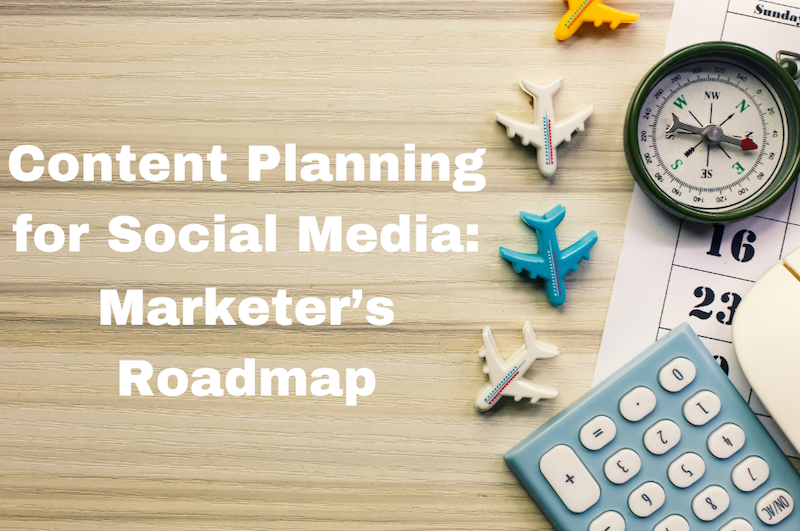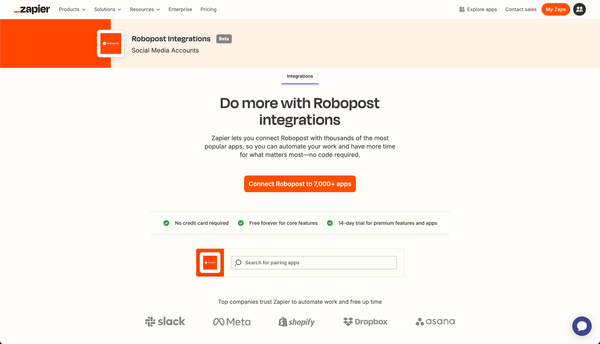Content Planning for Social Media: A Marketer’s Roadmap
Master social media content planning with our marketer's guide to objectives, creation, tools, consistency, and strategy optimization.

Content planning is a crucial part of a successful marketing strategy, especially on social media. A well-thought-out plan helps marketers create content that connects with their audience and supports their business goals, leading to increased engagement and growth. By setting clear goals, developing a content creation framework, using the right tools, keeping a consistent message across all channels, and constantly improving their approach, marketers can build a content plan that is both effective and sustainable.
Key Takeaways
- Good content planning should match your business goals and be driven by clear objectives and key performance indicators (KPIs).
- Having a well-organized content creation plan, with a content calendar and good resource management, is important for maintaining consistency.
- Using advanced tools and platforms for content planning can make the process smoother and improve your content marketing efforts.
- Keeping a consistent message across different channels helps build a unified brand image and engage effectively with your audience.
- Regularly reviewing and improving your content strategy is necessary to spot issues, use data insights, and adjust to market trends.
Establishing Your Content Marketing Objectives
Identifying Goals and KPIs
Before starting content creation, it’s important to set clear goals and key performance indicators (KPIs) that match your business objectives. These KPIs will guide your content strategy and help you measure its success. Begin by sorting your KPIs according to the stages of your marketing funnel, such as brand awareness, engagement, or conversions.
Aligning Content with Business Strategy
To make sure your content marketing is successful, you need to align your content goals with your overall business objectives. This ensures that each piece of content helps achieve your larger goals, whether it's increasing brand awareness, driving sales, or building thought leadership.
Start by identifying your main business goals. Then, figure out how each piece of content can help achieve these goals. Regularly check how your content is performing in relation to these goals and adjust your strategy as needed.
By planning your content to match your business strategy, you'll make your marketing efforts more efficient and increase the impact of each piece of content on your business growth.
Developing a Content Creation Framework
Choosing the Right Content Mix
The success of your social media strategy depends on having a variety of content that is both diverse and relevant. Balancing different types of content will help keep your audience engaged and cater to various preferences. Here’s a simple guide to finding the right mix for your brand:
- Educational Content: Share useful information, tips, and how-to guides related to your industry.
- Inspirational Content: Post motivational quotes, success stories, and content created by your users that your audience will connect with.
- Promotional Content: Highlight new products, offer special deals, and showcase the key features of what you offer.
- Interactive Content: Use polls, quizzes, and questions to encourage engagement and interaction with your community.
When planning your content, remember to adapt it to the unique features of each social media platform. For example, Instagram is very visual, so focus on high-quality photos and videos, while LinkedIn is better for detailed articles and professional insights.
Setting a Content Calendar
A content calendar is essential for organizing your content strategy, showing what needs to be published and when. It helps distribute your content evenly and align it with important dates and events that matter to your audience. To create an effective content calendar, follow these steps:
- Decide how often you will post based on what your audience likes and what your team can handle.
- Plan different themes or topics for different days or weeks to keep things interesting.
- Use tools like Robopost to help manage your schedule.
Here’s a simple table to help you plan a basic weekly content schedule:
Day | Theme | Content Type | Platform |
|---|---|---|---|
Monday | Product Focus | Blog Post | Website |
Tuesday | Customer Story | Video | YouTube |
Wednesday | How-to Guide | Infographic | |
Thursday | Industry News | Article | |
Friday | Fun Fact | Image |
By sticking to a well-organized content calendar, you’ll maintain a steady stream of content that keeps your audience engaged and meets your marketing goals.
Resource Allocation and Workflow Management
Effective resource allocation and managing workflows are crucial for making your content marketing both efficient and scalable. By assigning tasks to the right team members and using suitable tools, you can streamline content creation and distribution.
Lastly, choose a content planning tool that works well with your current project. This will help your team collaborate effectively and ensure your content strategy runs smoothly across all platforms.
Leveraging Tools for Content Planning and Execution
Integrating Automation in Content Scheduling
In social media marketing, automation is key to efficiently scheduling content. By using automation tools, marketers can make sure their content is posted at the best times without having to do it manually. This not only saves time but also increases the visibility of the content.
- Automated Publishing
- Post Scheduling
- Multi-Account Management
These features are crucial for keeping a consistent presence across different social media platforms. For example, if you are looking for automation tools, Robopost is a great choice.
While automation offers many benefits, it’s important to choose tools that meet your specific needs. Some tools might be missing features like bulk uploads or third-party integrations, which could be important depending on your workflow. Therefore, it’s important to carefully evaluate the features and pricing to find the best match for your content strategy.
Building Consistency Across Multiple Channels
Crafting a Cohesive Brand Message
Being consistent is needed to making sure your brand's message connects with your audience. A strong brand strategy means clearly defining your brand's voice, which should be genuine and easy to relate to. This voice needs to be consistent across all platforms, from your blog to your social media channels, to build a loyal audience and establish your brand as a leader.
- Create a brand voice that reflects your company's values and mission.
- Make sure all content creators understand and use this voice.
- Regularly review and update your messaging to stay relevant and engaging.
A consistent brand message not only helps build trust with your audience but also makes your marketing efforts more effective. It's about being recognized and remembered, not just being heard.
Cross-Promotion Strategies
Cross-promotion strategies are key to spreading your message across different platforms and reaching a wider audience. Setting clear goals for cross-promotion helps you choose the right channels and content that will connect with your audience.
To make cross-promotion effective, it's important to understand and use customer profiles and preferences. By segmenting your audience and customizing your messages, you can create more personalized and impactful experiences. This segmentation can be based on user behavior, like the products they've viewed or how much they interact with your brand, leading to better engagement and conversions.
Lastly, combining consistent messaging with creative approaches can make your campaigns more efficient and scalable. It's about finding the right balance to keep your audience interested across all channels.
Evaluating and Optimizing Your Content Strategy
Spotting Gaps and Opportunities
When building a strong content strategy, it's just as important to identify its weaknesses as it is to recognize its strengths. Content planning tools help marketers quickly spot areas that need improvement. For example, you might find that you’re focusing too much on sales emails while lacking live engagement or original social media posts. Fixing these issues early can prevent bigger problems that could slow down your brand’s growth.
To effectively analyze your content strategy, consider these steps:
- Identify important keywords and related topics.
- Outline the buyer's journey.
- Study your competitors' content.
By carefully examining these aspects, you can create a content strategy that not only meets but exceeds your audience’s expectations.
Iterative Improvements Based on Data
A data-driven content strategy is all about constantly improving. By looking at performance data, marketers can see what content works well with the audience and what doesn’t. This understanding helps them adjust their content to better match what the audience likes and what the business needs.
- Testing different headlines, images, or audience groups with A/B testing
- Comparing multiple factors at once with multivariate testing
- Personalizing content based on customer profiles
By setting clear goals and defining what success looks like, marketers can systematically test different parts of their campaigns. This method increases ROI, builds stronger customer relationships, and ensures that the content strategy grows and adapts with market trends and consumer behavior.
Staying Ahead: Adapting to Market Trends
As the trend of social media marketing changes fast, keeping up with it is key to staying competitive. It's not just about following the latest craze; it's about understanding the bigger changes in how people behave and how technology is evolving. Marketers need to be open to learning and ready to adapt.
- Stay informed by keeping an eye on industry reports and consumer surveys.
- Follow thought leaders and influencers who often lead the way in new trends.
- Regularly update your content strategy to match new trends.
Being able to predict changes and boost ROI depends on how well marketers can bring new technologies and data insights into their plans. This helps build stronger customer relationships and supports long-term growth. By gathering and analyzing data, marketers can spot opportunities early and make smart decisions that fit both current and future market conditions.
Conclusion
Content planning is the foundation of a successful strategy. By using the right tools and carefully planning, marketers can keep their messaging consistent across channels, identify areas that need improvement, and create a clear narrative that connects with their audience. Whether you're working alone or as part of a larger team, the steps outlined in this article provide a guide for creating a content marketing plan that can grow and succeed. The goal is to produce content that not only engages your audience but also leads to conversions, driving traffic and revenue while positioning your brand as a leader in your industry. As we've discussed various tools and strategies, it's evident that with the right approach, your content marketing can deliver strong results, making every piece of content a vital part of your brand's success.
